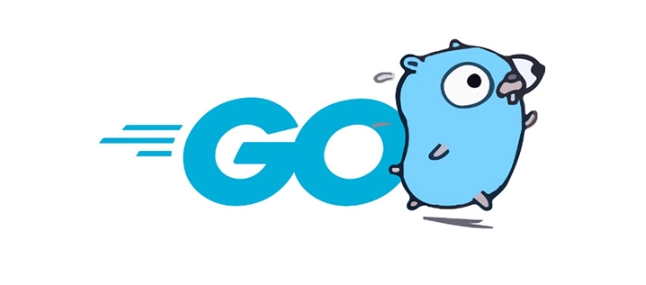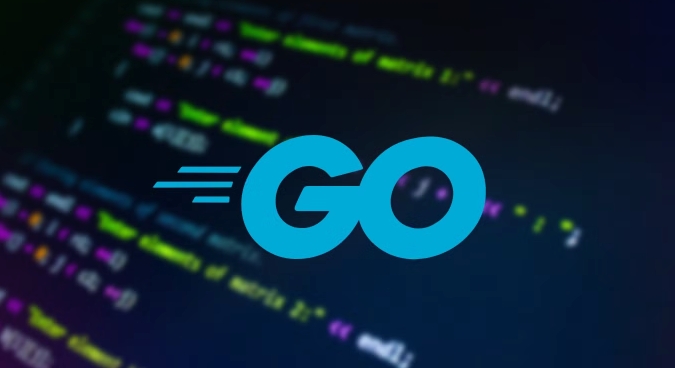 Backend Development
Backend Development
 Golang
Golang
 Understanding Memory Management Differences: Golang's GC vs Python's Reference Counting
Understanding Memory Management Differences: Golang's GC vs Python's Reference Counting
Understanding Memory Management Differences: Golang's GC vs Python's Reference Counting
The core difference between Go and Python in memory management is the different garbage collection mechanisms. Go uses concurrent mark clearance (Mark and Sweep) GC, which automatically runs and executes concurrently with program logic, effectively deals with circular references. It is suitable for high concurrency scenarios, but cannot accurately control the recycling time; while Python mainly relies on reference counting, and object references are immediately released when zeroed. The advantage is that they are instant recycling and simple implementation, but there is a circular reference problem, so they need to use the gc module to assist in cleanup. In actual development, Go is more suitable for high-performance server programs, while Python is suitable for script classes or applications with low performance requirements.

The core of the difference between Go and Python in memory management is that their garbage collection mechanisms are different. Go uses a Mark and Sweep garbage collector, while Python mainly relies on reference counting and is supplemented by a loop detection mechanism. Understanding these differences will help us write more efficient and stable programs.

Go's garbage collection: automatic and efficient
Go uses a Concurrent Mark and Sweep GC. Its characteristics are:

- Automatic run : Developers do not need to manually release memory.
- Concurrent execution : GC and program logic run concurrently to reduce pause time.
- Based on root object scanning : Starting from global variables and variables on the stack, find all reachable objects, and the remaining unreachable objects will be recycled.
The advantage of this method is that it can effectively deal with circular reference problems and is also suitable for large-scale concurrency scenarios. But the downside is that there may be a short "Stop the World" phase (although Go's GC is now very well optimized), and in some extreme cases it may not be as good as reference counting to free memory in time.
In actual use, you hardly have to worry about memory release issues, but it also means you cannot control exactly when memory is recycled.

Python's reference count: instant but error-prone
Python uses the reference counting mechanism to manage memory by default. Each object has a reference counter. When this counter becomes 0, the memory occupied by the object will be immediately released.
The advantages are obvious:
- Instant release : Once it is no longer used, the memory is recycled immediately.
- Simple implementation : clear logic, easy to understand and debug.
But there are also obvious shortcomings:
- Unable to handle circular references : For example, two objects refer to each other, and even if they are no longer referenced from the outside, the reference count will not be zeroed.
- High performance overhead : Frequent increase and decrease reference counts will affect performance, especially in multi-threaded environments.
To solve this problem, Python also introduced the gc module to perform circular garbage detection, but it is not enabled by default and will cause additional delays.
Selection suggestions in actual development
If you are writing high-performance server programs, especially in scenarios where a large number of concurrency is required, Go's GC performs better, and it has taken into account the needs of modern servers from the beginning. Python is more suitable for script-like tasks or applications with less extreme performance requirements.
For example:
- Are you writing a highly concurrent network service? Go is the better choice.
- Are you doing data processing scripts or small tools? Python may be more convenient.
In addition, try to avoid creating complex object graph structures in Python, especially those involving circular references; in Go, you should pay attention to reasonably control the object life cycle and avoid unnecessary memory usage.
Summarize the key points
- Go's GC is a concurrent mark-clearing algorithm, suitable for high-concurrency and low-latency scenarios.
- Python's reference counting mechanism is simple and direct, but it is easy to cause circular reference problems.
- Both mechanisms have their own advantages and disadvantages, and there is no absolute good or bad, depending on the specific application scenario.
- If you choose between the two, in addition to the language ecosystem, you should also consider the performance impact of memory management.
Basically that's it.
The above is the detailed content of Understanding Memory Management Differences: Golang's GC vs Python's Reference Counting. For more information, please follow other related articles on the PHP Chinese website!

Hot AI Tools

Undress AI Tool
Undress images for free

Undresser.AI Undress
AI-powered app for creating realistic nude photos

AI Clothes Remover
Online AI tool for removing clothes from photos.

Clothoff.io
AI clothes remover

Video Face Swap
Swap faces in any video effortlessly with our completely free AI face swap tool!

Hot Article

Hot Tools

Notepad++7.3.1
Easy-to-use and free code editor

SublimeText3 Chinese version
Chinese version, very easy to use

Zend Studio 13.0.1
Powerful PHP integrated development environment

Dreamweaver CS6
Visual web development tools

SublimeText3 Mac version
God-level code editing software (SublimeText3)
 What is sentiment analysis in cryptocurrency trading?
Aug 14, 2025 am 11:15 AM
What is sentiment analysis in cryptocurrency trading?
Aug 14, 2025 am 11:15 AM
Table of Contents What is sentiment analysis in cryptocurrency trading? Why sentiment analysis is important in cryptocurrency investment Key sources of emotion data a. Social media platform b. News media c. Tools for sentiment analysis and technology Commonly used tools in sentiment analysis: Techniques adopted: Integrate sentiment analysis into trading strategies How traders use it: Strategy example: Assuming BTC trading scenario scenario setting: Emotional signal: Trader interpretation: Decision: Results: Limitations and risks of sentiment analysis Using emotions for smarter cryptocurrency trading Understanding market sentiment is becoming increasingly important in cryptocurrency trading. A recent 2025 study by Hamid
 How to automate data entry from Excel to a web form with Python?
Aug 12, 2025 am 02:39 AM
How to automate data entry from Excel to a web form with Python?
Aug 12, 2025 am 02:39 AM
The method of filling Excel data into web forms using Python is: first use pandas to read Excel data, and then use Selenium to control the browser to automatically fill and submit the form; the specific steps include installing pandas, openpyxl and Selenium libraries, downloading the corresponding browser driver, using pandas to read Name, Email, Phone and other fields in the data.xlsx file, launching the browser through Selenium to open the target web page, locate the form elements and fill in the data line by line, using WebDriverWait to process dynamic loading content, add exception processing and delay to ensure stability, and finally submit the form and process all data lines in a loop.
 How to debug your Python code
Aug 13, 2025 am 12:18 AM
How to debug your Python code
Aug 13, 2025 am 12:18 AM
Useprint()statementstocheckvariablevaluesandexecutionflow,addinglabelsandtypesforclarity,andremovethembeforecommitting;2.UsethePythondebugger(pdb)withbreakpoint()topauseexecution,inspectvariables,andstepthroughcodeinteractively;3.Handleexceptionsusin
 How to handle large datasets in Python that don't fit into memory?
Aug 14, 2025 pm 01:00 PM
How to handle large datasets in Python that don't fit into memory?
Aug 14, 2025 pm 01:00 PM
When processing large data sets that exceed memory in Python, they cannot be loaded into RAM at one time. Instead, strategies such as chunking processing, disk storage or streaming should be adopted; CSV files can be read in chunks through Pandas' chunksize parameters and processed block by block. Dask can be used to realize parallelization and task scheduling similar to Pandas syntax to support large memory data operations. Write generator functions to read text files line by line to reduce memory usage. Use Parquet columnar storage format combined with PyArrow to efficiently read specific columns or row groups. Use NumPy's memmap to memory map large numerical arrays to access data fragments on demand, or store data in lightweight data such as SQLite or DuckDB.
 What is benchmarking in Golang?
Aug 13, 2025 am 12:14 AM
What is benchmarking in Golang?
Aug 13, 2025 am 12:14 AM
Gobenchmarkingmeasurescodeperformancebytimingfunctionexecutionandmemoryusage,usingbuilt-intestingtools;benchmarksarewrittenin_test.gofileswithnamesstartingwithBenchmark,takeatesting.Bparameter,andruntargetcodeinaloopcontrolledbyb.N,whichGoautomatical
 How to use gRPC for communication between microservices in Golang
Aug 12, 2025 am 03:49 AM
How to use gRPC for communication between microservices in Golang
Aug 12, 2025 am 03:49 AM
The steps to communicate between Go microservices using gRPC are: 1. Use ProtocolBuffers to define the service interface and message types, and write .proto files; 2. Install the protoc compiler and Go plug-in to generate greeter.pb.go and greeter_grpc.pb.go code files; 3. Implement the gRPC server, register the service and listen to the specified ports; 4. Create a gRPC client, establish a connection and call remote methods; 5. Run the server and client respectively to verify communication; 6. Follow best practices, including enabling TLS, using interceptors, error handling and version control; 7. Adopt a clear project structure for easy maintenance and updates. These steps allow for high efficiency
 How to flatten a nested list or a list of lists in Python
Aug 12, 2025 am 09:49 AM
How to flatten a nested list or a list of lists in Python
Aug 12, 2025 am 09:49 AM
FlatteninganestedlistinPythonconvertsalistwithsublistsintoasingleflatlist,andthebestmethoddependsonthenestingdepthanddatasize.Forone-levelnesting,uselistcomprehensionlike[itemforsublistinnested_listforiteminsublist]oritertools.chain.from_iterable(nes
 python plotly dash example
Aug 12, 2025 pm 05:23 PM
python plotly dash example
Aug 12, 2025 pm 05:23 PM
This example shows an interactive web application built on PythonPlotlyDash. 1. Create a web application interface using Dash. 2. Select data series (Sales, Profit, Expenses) through the drop-down menu (Dropdown). 3. Use Plotly to dynamically draw the corresponding time series line chart. 4. The data is a simulated 100-day time series and converted into a long format for easy drawing. 5. The callback function updates the chart content in real time according to the user's choice. After running, the application is started on the local server and can be accessed through the browser. It supports dynamic interaction and real-time updates. It is suitable for beginners to understand the basic structure and response mechanism of Dash. It can also be added and accessed by real data.






